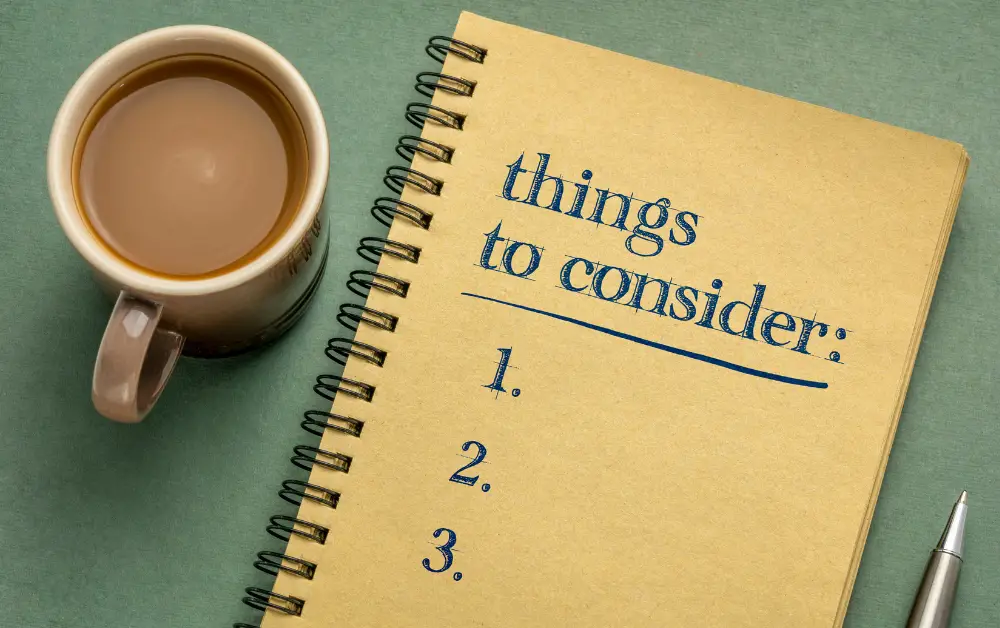In the relentless pursuit of optimal well-being, individuals are increasingly turning to unconventional yet effective methods. One such underestimated practice, list-making, proves to be a game-changer for both physical and mental health.
This article delves into the myriad ways in which list-making can enhance overall wellness. It tackles how the act of externalizing thoughts onto a tangible list serves as a potent cognitive exercise, promoting mental clarity and focus. In doing so, it not only facilitates the management of immediate tasks but also acts as a therapeutic mechanism, fostering a heightened mindfulness about priorities and aspirations.
Post Contents
The Simplicity of List-Making
In a world inundated with complex wellness strategies, the simplicity of list-making demands attention. Whether on paper or digitally, the act of compiling tasks in a list is a straightforward yet powerful tool. As you explore the attention-grabbing nature of list-making, uncover its potential to cut through the noise of modern life.
It becomes a deliberate pause in the relentless stream of stimuli, a moment of intentional reflection amid the chaos. It is a tactile and visual representation of your commitment to regaining control over your attention in a world where it is increasingly fragmented.

By providing a tangible roadmap, list-making not only captures your attention but also directs it purposefully, offering a respite from the constant barrage of information and allowing you to engage with your tasks and goals with heightened awareness.
Cognitive Benefits and Stress Reduction
List-making is not just about organizing tasks; it’s a cognitive exercise that promotes mental clarity. By externalizing thoughts onto a list, individuals can declutter their minds, leading to reduced stress and anxiety.
As interest in the cognitive benefits grows, list-making emerges as a practical and accessible technique for maintaining a healthy mental state. The deliberate externalization of mental processes transforms the abstract intricacies of the mind into a structured, tangible format, fostering a sense of clarity and organization conducive to maintaining a healthy mental environment.

Goal Achievement and Positive Habits
The desire for personal growth and goal achievement is a universal human aspiration. List-making serves as a conduit for turning aspirations into concrete goals. Breaking down larger objectives into actionable items not only boosts the desire for accomplishment but also cultivates positive habits.
The allure of achieving goals through list-making becomes a driving force for individuals seeking lasting change.
Integrating List-Making Into Daily Wellness Routines
The true power of list-making lies in its seamless integration into daily life. To capitalize on its benefits, one must cultivate the habit of creating purposeful lists. From daily to-do lists to long-term aspirations, the action of list-making becomes a ritual that promotes both physical and mental wellness.

Taking actionable steps toward identified goals transforms list-making from a mere task management tool to a holistic approach to personal well-being. And creativity can infuse new energy into the seemingly mundane task of list-making.
Here’s a guide on how to approach list-making with a creative flair.
1. Visual Mapping: Use a large sheet of paper or a whiteboard to visually map out your tasks. Connect them with lines, arrows, or doodles to create a mind map of interconnected ideas and actions.
2. Artistic Bullet Journaling: Adopt the bullet journaling method with artistic elements. Add doodles, illustrations, and calligraphy to make your to-do list visually appealing. Each task can be a small piece of art.
3. Themed Lists: Create themed lists based on your interests or current inspiration. Whether it’s a nature-themed list, a space-themed list, or even a list inspired by your favourite movie, let your imagination guide the theme.
4. Collaborative Lists: Make list-making a collaborative and creative activity. Invite friends or family to contribute to the list, adding their tasks, goals, or creative elements to make it a collective effort.

5. Storytelling Lists: Turn your list into a short story. Write down tasks as if they were plot points, giving a narrative flow to your day or week.
6. Time-Stamped Sketches: Draw quick sketches or symbols next to each task to represent the time or effort required. This adds a visual element to your scheduling and helps prioritize tasks.
7. Colour Coding: Assign colours to different categories or priorities. Use coloured pens, markers, or highlighters to create a visually vibrant and organized list.
8. Typography Play: Experiment with different fonts and writing styles. Play with typography to emphasize certain tasks or create a visual hierarchy within your list.

9. Motivational Quotes: Begin or end your list with a motivational quote. Let the words inspire and energize you as you tackle your tasks.
10. Vision Board Integration: Combine list-making with vision boarding. Attach images or symbols representing your goals to give your list a visual representation of what you’re working towards.
11. Interactive Elements: Add interactive elements to your list. Create fold-out sections, flip pages, or use sticky notes for additional details. This adds an element of surprise and engagement.
12. Emotion-Focused Lists: Tailor your list to your emotional state. Create sections for tasks that bring joy, relaxation, or a sense of accomplishment. This way, your list becomes a reflection of your emotional well-being.

13. Playlist Accompaniment: Craft a playlist that complements your list-making session. Align the mood of your music with the energy you want to infuse into your tasks.
14. Seasonal Lists: Align your list with the seasons. Create a list that captures the essence of the current season, incorporating elements like weather symbols or seasonal goals.
Remember, the key is to make list-making a personal and enjoyable experience. Let your creativity flow, and don’t be afraid to experiment with different styles until you find the one that resonates with you.
The Wrap Up: Elevating Wellness Through List-Making
The often-overlooked practice of list-making emerges as a potent tool for enhancing physical and mental wellness. By capturing attention through its simplicity, generating interest through cognitive clarity, nurturing the desire for achievement, and promoting actionable steps, list-making becomes a holistic approach to personal growth.
Incorporating list-making into daily routines is not just about crossing off tasks; it’s about fostering a lifestyle that prioritizes well-being in a world that often feels overwhelming. As the saying goes, “The shortest pencil is longer than the longest memory.” Embracing list-making is an invitation to not only remember but to actively shape and enhance one’s journey to wellness.

Frequently Asked Questions
1. Can list-making improve productivity?
Yes, lists provide clarity, help you break down tasks into manageable steps, and serve as a roadmap for your day. By focusing on your priorities, you can enhance your productivity.
2. What if you can’t complete everything on your list?
It’s common not to finish everything. Prioritize tasks and carry over unfinished items to the next day. Reflect on why certain tasks weren’t completed and adjust your approach accordingly.
3. Can list-making help with stress management?
Yes, it can. Lists bring order to chaos, reduce mental clutter, and allow you to approach tasks systematically, alleviating stress and providing a sense of control.





